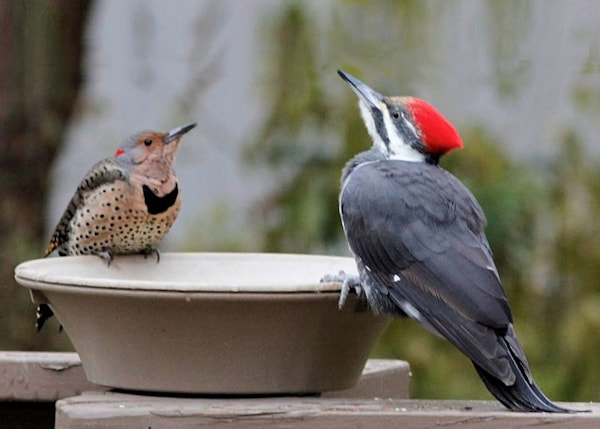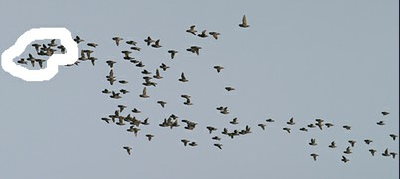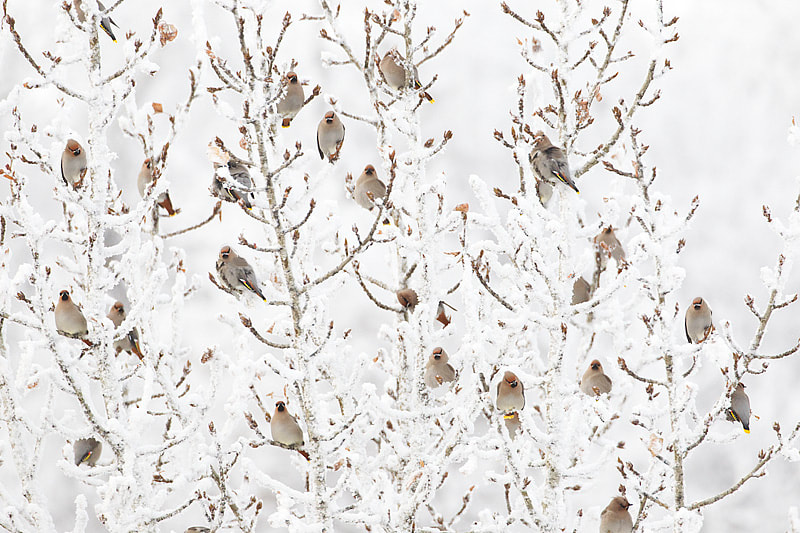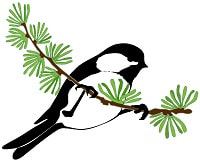How to Count and Identify the Birds
Only include the birds you see on Count day.
Welcome citizen scientists, here's how the project works:
Feeder Watcher:
Feeder Watcher:
- Please review our Winter Birds gallery to assist with identification and to find what species are expected.*
- Note the estimated number of birds for each species seen in the yard on Count day. They don't have to visit a feeder. Try not to recount the same birds. For example: If you see a single Black-capped Chickadee 10 different times, it's probably only one Chickadee but if you sometimes observe 2 or 3 or more, in the yard at the same time, enter the highest number that you see at one time. Include birds that come to your yard during the time you are watching, even if they don't visit a feeder.
- *If you see something really unusual write down all the details and try to get a photo. If it's rare, we need a form filled out. It's helpful to let your captain know ahead of the Count if you are seeing a rare bird in the days just prior to Count day.
- "Effort" is part of the data set. Record the total time spent watching the feeder(s) on Count day. Choose a time when feeders are active and watch for at least 15 minutes. Usually a couple of hours is the maximum unless you get some new species at a different time of day.
- Send In Your Numbers on Count day using the online form.
Bush Beaters:
- Are grouped and given assignments by their zone captain.
- Review our Winter Birds gallery. Be aware there are A, B and C lists of birds depending on how commonly they are seen.
- Each group needs to assign one member to record the group effort and the birds counted. An experienced eBird user is able to use that platform as the group record.
- Number of participants in the group, how far they travelled while counting, indicating whether counting on foot or by vehicle, and how much time was spent in either/each of these.
- Numbers of individual birds for each species identified. See details below on how to count flocks of birds.
- Eagle and other large raptor sightings should include details of time seen, adult/immature, perched/flying, direction of flight.
- Please record details and try to get a photo for any RARE (C list or not listed) bird. Your captain will ask you to fill out a rare bird report. (The form is on the Captain's Resources page.) Without good documentation, a rare bird may not be accepted by Birds Canada for our Count.
- Each group leader is responsible to ensure results are sent to the zone captain. This is often through the Send In Your Numbers page on Count day using the online form. Check with the captain, some may meet their groups to collect a paper form and some will accept an eBird list if you know how to email its link. If using an eBird list remember to note whether walking or driving and details for eagles and other large raptors.
How to count a flock of birds
The best technique to use when encountering a large flock of birds (waxwings for example), either flying or perched, is to count a sample of the flock and then multiply your number of birds by the number of similar size areas covered by the flock.
The best technique to use when encountering a large flock of birds (waxwings for example), either flying or perched, is to count a sample of the flock and then multiply your number of birds by the number of similar size areas covered by the flock.
Banner photo: Bohemian Waxwings by Gerald Romanchuk



